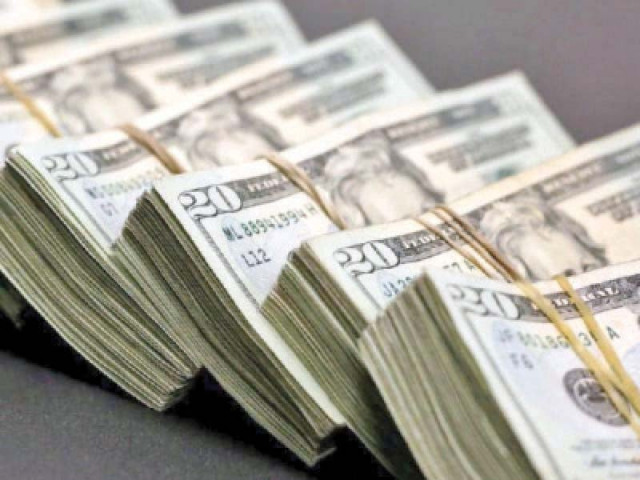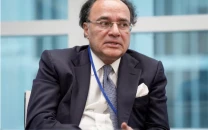Pakistan’s debt skyrockets to Rs62.5tr
Debt mismanagement, rupee devaluation, high interest rates push debt to record high

Statistics released by the central bank, on Wednesday, show that Pakistan’s total debt and liabilities peaked, by an unsustainable 24%, to Rs62.5 trillion at the end of September 2022 – pushing the country into unchartered territory.
According to the State Bank of Pakistan (SBP), the total liabilities of the country, mainly government debt, surged by Rs12 trillion, or 23.7%, compared to a year ago.
The figures reported in the central bank’s latest debt bulletin suggest that no political party, neither the Pakistan Tehreek-e-Insaaf (PTI) nor the Pakistan Muslim League-N (PML-N), have a solution out of our growing debt problems. With the mounting number of loans, coupled with a lack of resources to repay, the country’s destiny has been placed in the hands of international financial institutions and the global powers.
Now, however, the realisation that Pakistan cannot seem to survive without continued financial support is becoming more apparent to the world powers, creating problems in the political and security spheres.
The central bank did not give the percentage of Pakistan’s total debt and liabilities in terms of size of the economy. The increase in public debt alone, a direct responsibility of the government, was Rs9.7 trillion in the past year. Gross public debt was recorded at Rs51.1 trillion by the end of September 2022, according to the SBP.
None of the three mainstream political parties have managed to bring any meaningful reforms to stop debt accumulation. Instead, in its 43-month rule, the PTI added the largest amount of debt to country ever.
While blaming his predecessors for throwing the country under a pile of debt, former prime minister Imran Khan had promised to curtail debt on priority. When he left office in April 2022, however, his government had mounted Rs19.5 trillion to the federal government’s total debt stock.
During his visits to China, Saudi Arabia and the United Arab Emirates, Pakistan’s Finance Minister Ishaq Dar pleaded for additional loans so as to meet this year’s gross financing requirements. The government is also in dialogue with foreign commercial banks, the World Bank and the International Monetary Fund (IMF) to secure loans.
There was a clear mismatch between the increase in public debt and the budget deficit, showing the adverse impact of the currency devaluation on the external debt stock.
In terms of US dollars, Pakistan’s total external debt and liabilities remained almost unchanged at $127 billion in the past one year due to the soaring ties between Pakistan, the international financial institutions (IFI) and Washington. However, in terms of the rupee, there was a massive surge in external debt due to the currency’s devaluation.
Pakistan’s total external debt jumped to Rs26.5 trillion as of September-end – an addition of Rs6.8 trillion or 35% compared to last year. Excluding the IMF loans, the federal government’s external debt increased to Rs18 trillion within one year. There was a net increase of Rs1.3 trillion in external debt, largely caused by the depreciation of the rupee and the country’s efforts to build foreign currency reserves via borrowing.
Pakistan’s debt from the IMF increased by 44% within one year to Rs1.7 trillion by the end of September, stated the SBP. This is despite the fact that the IMF has disbursed about $2 billion less than its scheduled releases during this period.
The federal government’s total domestic debt increased to Rs31.4 trillion, an addition of Rs5 trillion, or 19%, in one year.
The lower-than-targeted tax collection, steep currency devaluation, high interest rates, rising expenditures along with losses incurred by state-owned companies and debt mismanagement were the main reasons for the surge in public debt.
The average exchange rate on the last day of September 2022 was Rs228 to a dollar due to a depreciation of 57.4% in just one year, according to the central bank. This had a huge impact on the government’s external debt.
The direct consequence of the mounting pile of debt is a huge increase in the cost of debt servicing. In just one quarter of the current fiscal year, debt servicing stood at Rs1 trillion. The government’s revised estimates show that the cost of debt servicing may cross Rs4.7 trillion – about Rs750 billion more than the budgeted figure.
Published in The Express Tribune, November 17th, 2022.
Like Business on Facebook, follow @TribuneBiz on Twitter to stay informed and join in the conversation.



















COMMENTS
Comments are moderated and generally will be posted if they are on-topic and not abusive.
For more information, please see our Comments FAQ